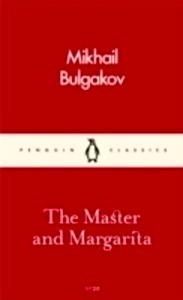The Master and Margarita

Editorial Penguin Books Ltd
Fecha de edición mayo 2016 · Edición nº 1
Idioma inglés
EAN 9780241259320
Libro
Resumen del libro
'Manuscripts don't burn'. In Soviet Moscow, God is dead, but the devil - to say nothing of his retinue of demons, from a loudmouthed, gun-toting tomcat, to the fanged fallen angel Koroviev - is very much alive. As death and destruction spread through the city like wildfire, condemning Moscow's cultural elite to prison cells and body bags, only a madman, the Master, and Margarita, his beautiful, courageous lover, can hope to end the chaos.
Written in secret during the darkest days of Stalin's reign and circulated in samizdat form for decades, when The Master and the Margarita was finally published it became an overnight literary phenomenon, signalling artistic freedom for Russians everywhere.
Biografía del autor
x{0026}lt;P x{0026}lt;B Mijaíl Bulgákovx{0026}lt;/B (1891-1940) nació en Kiev, Ucrania, y estudió medicina aunque renunció al ejercicio a favor de la creación literaria. Entre sus primeras obras destacan x{0026}lt;I Maleficios x{0026}lt;/I (1925), x{0026}lt;I Corazón de perrox{0026}lt;/I (1925) y x{0026}lt;I Morfina x{0026}lt;/I (1927). El reconocimiento le llegó con la novela x{0026}lt;I La guardia blancax{0026}lt;/I (1925), que posteriormente fue dramatizada con el título x{0026}lt;I La huidax{0026}lt;/I (1926). Se enfrentó por ello a la crítica oficial por su favorable retrato de un grupo de oficiales antibolcheviques durante la guerra civil y por la falta de un héroe comunista. Aunque sus obras disfrutaban de gran popularidad, su sátira de las costumbres soviéticas le valió la prohibición a publicar a partir de 1929. Su obra más conocida, x{0026}lt;I El maestro y Margaritax{0026}lt;/I (que no se publicó en la Unión Soviética hasta 1966) fue escrita entre 1929 y 1940, año de la muerte del autor. La fama de Bulgákov se vio reforzada a partir de 1962 por la publicación póstuma de sus novelas, obras teatrales y la biografía x{0026}lt;I Vida del señor Molièrex{0026}lt;/I .x{0026}lt;/P








